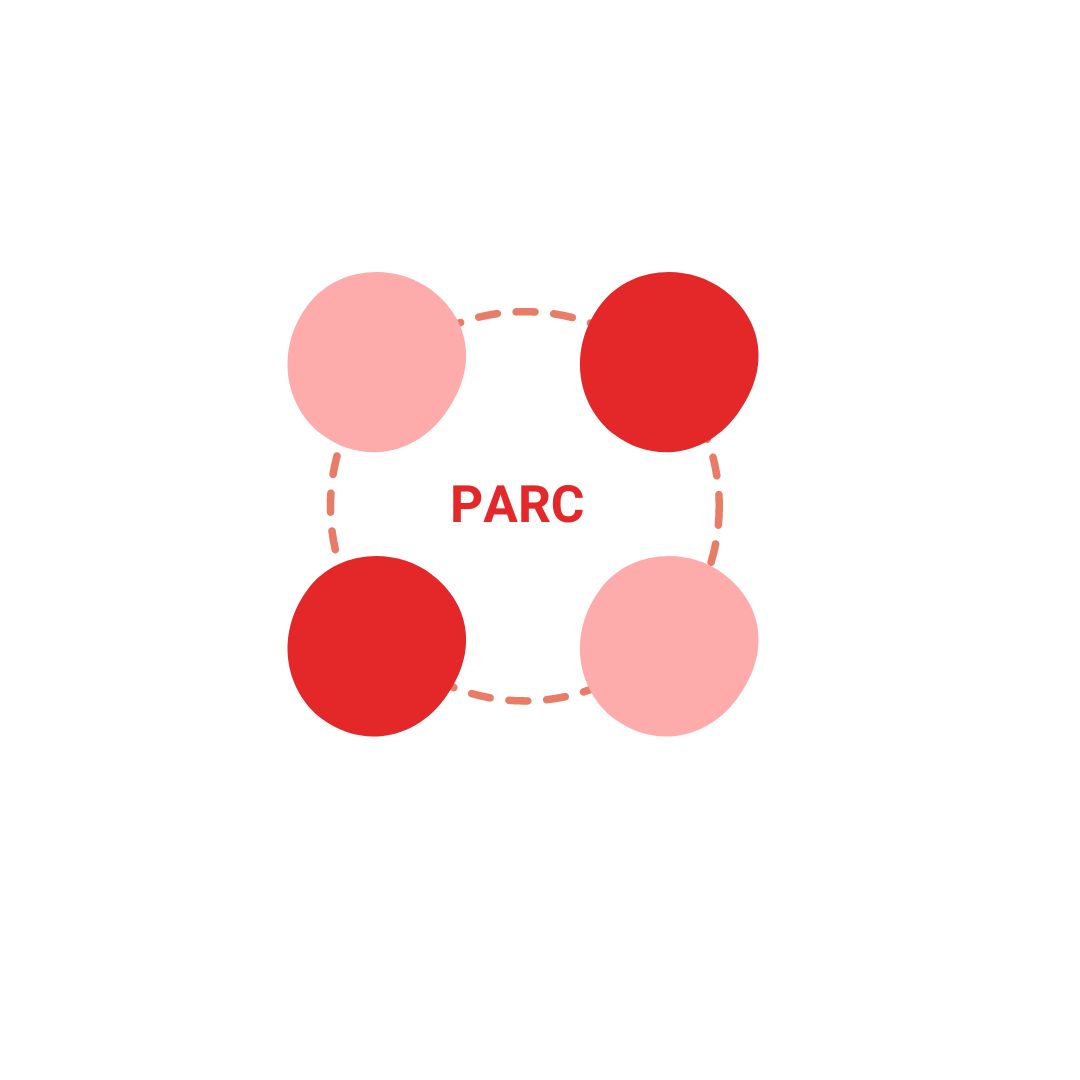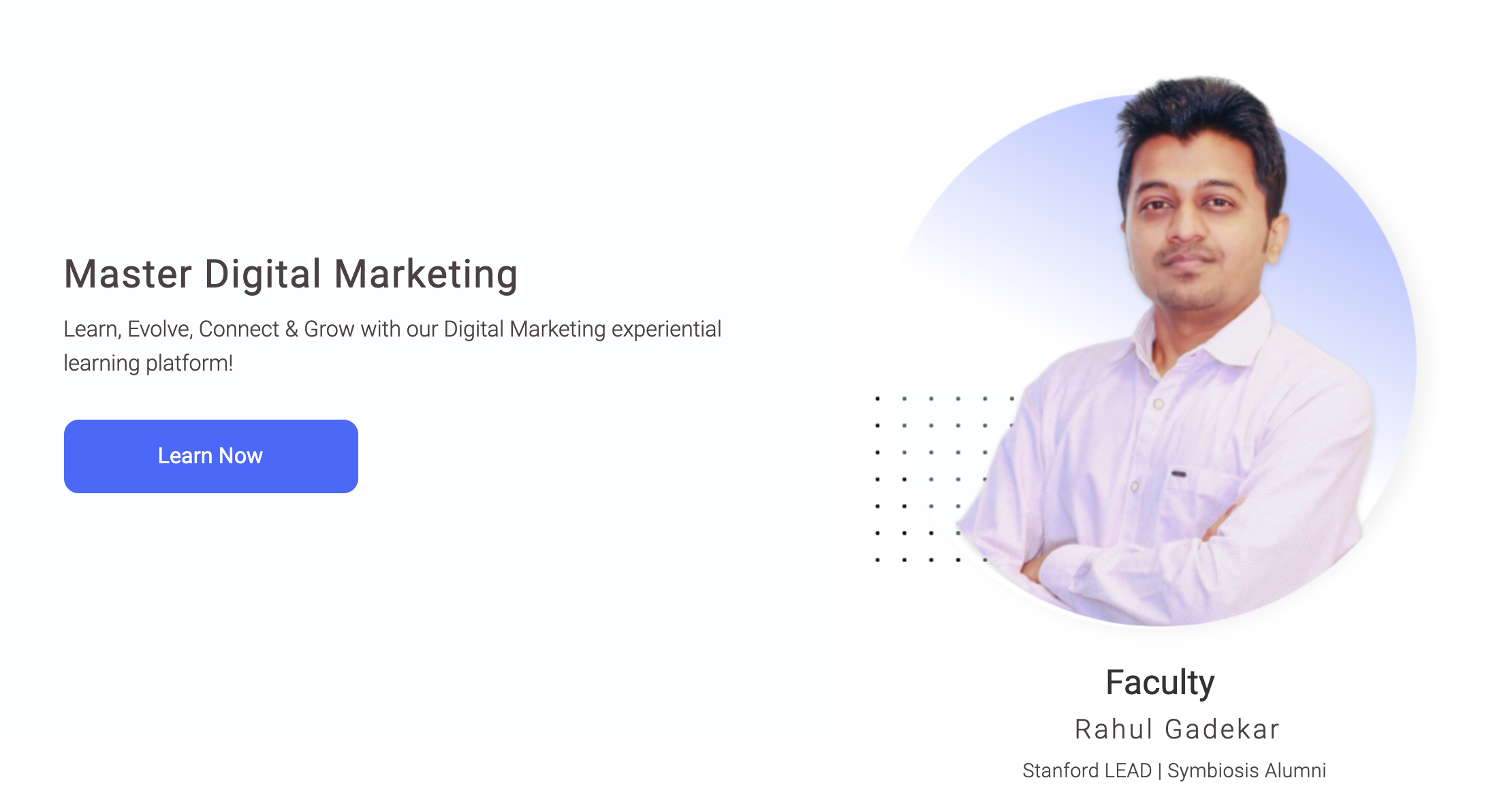The digital marketing landscape is evolving at an astounding pace and new concepts are being developed on a regular basis. Growth hacking is one such widely employed concept in the digital marketing world. It is not just another buzzword. According to Sean Ellis, the founder and CEO of Qualaroo and the creator of the growth hacking concept, every strategy, tool, and technique that digital marketers who ascribe to the concept employ should be driven by their desire for growth.
Though growth is the evident and singular aim of growth hacking, the beauty of the concept is its flexibility and that is what makes it a valuable practice. Besides, the concept can be employed by businesses of all sizes from start-ups to multinational corporations. Growth hacking doesn’t differentiate one type of business from another and companies of all can leverage its potential.
The digital space is a battleground and marketers have to fight it out to achieve a competitive advantage. They have to often deal with uncompromising targets, limited resources, shoestring budgets, and stiff competition. This means that a conventional approach is no longer effective when it comes to marketing and adaptation is the only way to survive in today’s competitive market conditions. That’s when the growth hacking concept comes to your aid.
What is Growth Hacking?
Growth hacking can be defined as a strategy, a mindset, and a method to achieve growth in any field. Since the introduction of the concept in 2010, growth hacking has been widely used by cash-strapped Silicon Valley start-ups to seek growth. It is an umbrella term that covers the growth strategies employed by companies to achieve scalable and unbelievable growth. It also helps companies develop a laser-focused mindset and employ the most cost-effective solutions in order to achieve growth.
This means that growth hacking can be considered a marketing strategy, a product development technique, a way of operating a business or managing a team within an organization, or a buzzword used by marketers. At its best, it combines product development, management, analytics, and marketing into a comprehensive strategy.
This is to say that growth hacking isn’t only about marketing, analytics, or product development; it’s the creative use of the concept for growth that matters. Whether you are a start-up, a large enterprise, an eCommerce venture, a SaaS platform, or a B2B or B2C business, growth hacking is important for your business.
Benefits of Growth Hacking
Experimentation Approach
Growth hacking allows you to build experimentation mindset, here you build different hypotheses which feel could be tested to drive growth. Having an experimental mindset is important in today’s digital world, growth hacking allows you to go beyond traditional methods and discover new approaches to get closer to your objectives
Highly Cost-Effective
The idea behind employing growth hacking strategies is to identify low-cost, easily accessible, and efficient channels that others have not found out about until then.
Offers a Great Deal of Flexibility
The flexibility offered by growth hacking makes it both a valuable and viable process. Whether a business is a single-man organization or a large multinational enterprise, the marketing strategy works equally well. This is because the process is all about focusing on the overall growth of an organization.
Digital Marketing and Growth Hacking Complement Each Other
Some principles and metrics like higher conversion, engagement, and retention rates are common for both digital marketing and growth hacking. However, digital marketing is not a substitute for growth hacking. The truth of the matter is that they complement each other.
Helps Generate Qualified Leads
One of the most important benefits of growth hacking is that it helps generate a large number of qualified leads. However, a one-size-fits-all approach is not possible, as growth hacking is more about developing a growth mindset in the organization.
Helps Build Brand Identity and Reputation
By definition, growth hacking is all about building, engaging, and retaining the customer base of an organization. However, it should portray the story of a brand effectively in order to be effective. This is best achieved by identifying and addressing customers’ pain points.
Other benefits of growth hacking include:
- Helps embrace a growth mentality
- Beneficial to companies, teams, or individuals
- Helps develop new product ideas and business models
- Helps build better products
- Suitable for all types of goals
- Helps discover data-driven strategies
- Highly cost-effective and improves ROI
- Helps determine growth loops
- Helps identify scalable marketing strategies
- User behaviour analytics
Growth Hacking Case Studies
AirBnb
Airbnb was aware that the best way to reach its target audience was through Craigslist. So, Airbnb offered a listing on Craiglist to all those who listed their properties on the aggregator’s website. This means the properties of those who agreed would get listed on both websites. Besides, the clicks received on Craigslist were backlinked to the posting on the Airbnb site.
As this functionality was not available with Craiglist, Airbnb offered to build the backend to make it possible. Craigslist eventually realised this and blocked this functionality. However, it had already helped Airbnb get off the ground.
Besides, Airbnb combed through the posts on Craigslist and contacted users. Emails with attractive proposals were sent to all those who were wanting to rent out their places and encouraged them to list their properties on Airbnb.
Basically, their growth hacking strategy involved the infiltration of Craigslist. And, with the help of some creative ideas and custom coding, Airbnb took its business to the next level.
Dropbox
Dropbox employed a simpler and stripped-back approach. Dropbox offered incentives for word-of-mouth advertising. The company offered 500 MB of additional space to all users for every friend they recommended. Dropbox gained access to more users through the family and friends of their existing customers. In fact, it was not a one-time offer to their customers. They could gain up to 16 GB of additional space for free! So, their customers kept inviting new users to the program.
Instead of providing a ‘sign-up’ gift, Dropbox succeeded in turning a vast number of their existing customers into free advertisers. So, the company’s popularity grew in a short span of time. Dropbox is a great example of good growth hacking.
The number of Dropbox users zoomed from 100,000 to 4 million in just a year. Furthermore, when Dropbox became a publicly-owned company in 2018, its market value topped 12 billion dollars.
How to Implement Growth Hacking within your Digital Marketing Team
Growth hacking works best when digital marketers find and exploit nuances that others fail to notice. Their focus on developing out-of-the-box solutions helps to increase their effectiveness and the chances of achieving a higher level of success. However, you should be ready for experimentation if you want growth hacking to work for you. Besides, it is important to note that nothing is guaranteed in growth hacking. You need to take risks and unlock potential strategies.
Growth Hacking Pillars
The five key growth hacking pillars that you can use as guidelines to create your own strategy are:
- Evaluate the marketing initiatives that are being currently used (lead generation, driving traffic, page views, etc.)
- Identify the processes that can be improved
- Experiment and find new ways to achieve your goals
- Know when the compiled data prove the assumptions made
- Document new strategies and share findings with the digital marketing team
This enables you to determine where improvement is needed, what activities you can rely on, and what you might have missed.
Using Pirate Metrics
Another important aspect of growth hacking is using pirate metrics. The acronym AARRR represents the five metrics that are involved. They are:
Acquisition – New customer acquisition
Activation – Activating customers to try your product(s)
Retention: Retaining customers
Referral: Taking others’ help to find new customers and even promoting your brand
Revenue: Increasing cash flow
These are the metrics that directly impact the outcomes of marketing efforts. As such, implementing the growth hacking concept within your digital marketing team involves highlighting the importance of the following aspects:
Content repurposing
It involves taking existing or old content and using it for a newly identified purpose. This is because existing content can serve many new needs. Revamping existing and old blog posts into email newsletters, guest posts, or e-books helps you do more with less as well as save time, money, and resources.
Optimizing online presence
Optimizing online presence involves ensuring consistency in messaging and branding across all of the online platforms where clients’ companies have a presence. It also involves making clients’ websites more mobile-friendly and SEO-friendly. Having fast and easy-to-navigate websites makes it easier for visitors to become customers.
Referral marketing
Referral marketing is a tenet of pirate metrics and it dramatically boosts all other marketing efforts. In general, the chances of a referred consumer buying products or services are four times higher. It may involve setting up a landing page containing information about the client’s referral program and capturing visitors’ email addresses. Existing customers and newsletter subscribers can also be requested to share the landing page within their networks.
Gamification of the Onboarding Process
The activation of clients is an important metric in the AARRR framework. This is because most people become frustrated when information about how to use a product or avail of a service is missing. Gamifying the process of onboarding is a proven way of keeping users active on your website or app long enough to help them get to know how to use it. It improves retention and incentivizes users to recommend your products to users’ friends and family.
Connecting with the community
Creating a community is important for growth hacking success. In today’s world, consumers expect feedback in real time from organizations they engage with or purchase from. The more digital marketers target ideal customers in their natural habitats online, the easier it is for the clients to engage with them. Online communities also connect prospects and would-be customers with their existing customers. This, in turn, presents opportunities for reverse engineering and drives referral programs.
Getting the Social Media Advantage
When it comes to growth hacking social media channels, identify platforms that clients’ competitors are not using. Another strategy is to announce challenges that encourage clients’ audiences to use the product or services and pass it on to their families and friends. This improves a client’s online visibility through more likes, followers, and shares.
Using Interactive Content
Interactive content like quizzes, videos, and webinars are commonly used in marketing campaigns. This is because getting the audience to interact with content is considered to be very important in growth hacking. Moreover, interactive content increases brand loyalty and engagement.
Different Tools for Growth Hacking
CleverTap
The analytics tool CleverTap describes itself as the “all-in-one retention platform”. It integrates data derived from websites, apps, and marketing campaigns and enables you to understand both customer demographics and behaviours by analyzing how customers interact with your company and the products or services you offer. This helps you a great deal in improving not only customer acquisition but also retention as CleverTap’s analytics enable you to focus on building long-term relationships with customers through engagement across many platforms and even manage lifecycle stages and improve lifetime values (LTV).
CleverTap Key Features
- Helps you optimize retention rate and reduce customer churn rates.
- AI and ML capability enables you to develop targeted marketing campaigns
- Provides pre-designed marketing campaigns to maximize engagement by spending the least amount of resources
- Offers “cross channel messaging” capability to engage customers via web, mobile, social media, etc.
VWO
VWO offers an end-to-end CRO platform that helps brands better understand visitor behaviour, build test pipelines, make observations, obtain statistical results, and enhance customer engagement through new-age channels.
VWO Key Features
- Allows importing, aggregating, and tracking growth metrics impacted by marketing campaigns
- Enables designing and launching simple and complex experiments
- Helps align teams with roadmap testing
- Provides comprehensive results that give you a clear idea of the impact of campaigns on specific audiences and enable the decision-making process
- Enables you to determine and confirm your hypotheses through qualitative user insights via session recordings, website surveys, and heatmaps
HubSpot
HubSpot’s growth hacking tool is a software suite that covers sales, marketing, and customer service software. You can get started with their free software free to effectively manage your sales pipeline, track emails, and schedule meetings. Then you can use tools such as Customer Hub and Marketing Hub to automate marketing, build your website, convert contacts, and connect with visitors.
HubSpot CRM Key Features
- Helps you track and analyze sales in real time
- Reporting dashboard
- Company insights
- Deal tracking
- Pipeline management
Marketing Hub Features
- Marketing Hub offers marketing tools and data under one roof
- Helps you create content that your audience wants (blog, SEO, ad tracking and management, social media management, video, live chat)
- Helps you convert more leads (landing page builder, form builder, marketing automation, email marketing, account-based marketing, lead tracking and management)
- Helps you translate data into strategies through analytics (marketing analytics, custom objects, and Salesforce integration)
Customer Hub Features
- Customer service (customer portal, knowledge base, omnichannel messaging, inbound calling, live chat, VOIP calling)
- Customer insight (fully integrated CRM, shared inbox, conversation intelligence, conversation APIs, customer feedback surveys, playbooks)
- Helps improve the support team’s efficiency through automation and reporting (help desk and ticketing, service analytics, team management, SLAs, mobile inbox, automated customer service)
Glassbox
Glassbox provides you with customer journey analytics data. The company’s digital experience analytics platform offers information in real-time, across websites and mobile apps to accelerate growth. The tool helps you to prioritize digital product enhancements and customer experience through a collaborative system. All teams of your organization, from product management and IT to accounting and marketing get to understand customers’ problems as well as visualize their journey and optimize processes.
Glassbox Key Features
- Mobile App Analytics
- Customer Journey Analysis
- Session Replay
- Interactions Maps
- Funnel Analysis
- Performance Analytics
- Struggle and Error Analysis
- Product Analytics
- Voice of Customer
- Digital Record Keeping
Amplitude
Amplitude, real-time data analytics software for mobile and web, is used for analyzing visitors’ behaviour data. The software helps you understand your customers better and this helps the growth of companies by improving conversion as well as retention metrics.
It analyzes reports to understand customers’ interaction with your product. Product management, marketing, and growth teams can make use of the information to decide the direction of their business. Understanding customers enables you to formulate strategies and improve customer engagement, retention, and revenue.
Amplitude Key Features
- Amplitude’s Growth Discovery Engine helps you to predict customer behaviours that lead to conversations or retention and drive growth.
- It provides you with analytics data in real-time (retention, funnels, user segmentation, and revenue analysis).
- The microscope allows you to analyze the behaviour of customers. Furthermore, you can compare the behaviour of churned and engaged customers.
- Amplitude retention analysis allows you to find out the number of times a visitor returns to your product following a specific action.
- Amplitude user cohorts feature helps you create different cohorts as per their actions.







